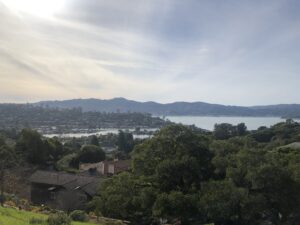What’s a Surfboard Made of?


Samson Donick pointed out that you are not the only one who has ever wondered what a surfboard is. There are options for people of all skill levels and budgets. From Balsa to EPS to XPS to Polyurethane, there are a lot of options to choose from. But which material will work best for your needs? In this article, we’ll talk about them all. Read on for more information if you’re still not sure.
Polyurethane by Samson Donick
PU is a flexible plastic that is used to make polyurethane surfboards. They are light and easy to shape, but they don’t respond as well as other materials. If you want to change how your surfboard looks, you’ll probably want one made of polyurethane. They do not last as long as other materials, though. To get the same feel as your old surfboard, you may need to have a professional shape your new one.
Balsa
During its best time, balsa was the best option between a light foam blank and an 80-pound olo. Its shiny grain reminded me of the spirit of young Americans who wanted to change things. The material’s new design and the fact that it was made of natural, light materials changed the way surfers rode waves. Today, fiberglass, resin, and skegs have taken over.
The “Evo” surfboard is better for controlling in rough water for more experienced surfers, while the “Malibu” is for heavier surfers. The “Orca,” a small surfboard made of balsa wood, is a secret weapon for small waves. The “Pheni” balsa surfboard has the speed and maneuverability of a fish and a shortboard. The retro fish balsa surfboard is great for small waves or waves caused by wind.
Legendary surfers made the first balsa surfboard in the 1940s. They were easier to control in waves because the material was light and hollow. In the 1950s, most surfboards were made of balsa wood, and commercial shapers made a lot of them. By the late 1990s, balsa wood boards were a better choice for the environment than foamboards, which were bad for the planet. But the movement toward surfing that is better for the environment caused the famous balsa surfboard company Clark Foam to go out of business in 2005.
EPS by Samson Donick
According to Samson Donick, expandable polystyrene foam, which is similar to Styrofoam, is used to make the core of EPS surfboards. It is usually a closed cell and is made of small expandable beads that are put in a mold and then grow to form the shape of the board. The beads, on the other hand, are not water-resistant like Polyurethane foam, and they can soak up water.
EPS surfboards are very durable, which is one of their many benefits. EPS surfboards are easier to shape than traditional boards made of wood. Using traditional resin may make the surfboard heavier, but it will also drain into the blank, leaving air pockets and adding extra weight. Because the blank has to be sealed, laminating takes twice as long and requires twice as much work as other materials. This can slow down production and take up a lot of space in the factory.
The core of an EPS surfboard is made of polystyrene plastic resin that is hardened by ultraviolet light. The UV-stabilized resin in EPS surfboards makes them last longer than wooden boards. The result is a board that bends like PU boards but is much lighter. The process starts with a digital design in CAD software. Then, a CNC milling machine makes the part. Sanding by hand is the next step.
XPS
Samson Donick describe that, foam is used to make both EPS and XPS surfboards, but they are made of different types of foam. EPS is made of small spheres that are only partly stuck together. “Beaded foam” is another name for this kind of foam. Because these materials are made of open cells, water can get in and out of the board. EPS has a low price and lasts a long time, but it also absorbs water and is hard to shape and airbrush.
XPS is a popular material for making surfboards. An 8′ x 4′ x 3″ foam sheet can be turned into two good-quality surfboards. In 2006, it cost $46 for an XPS surfboard. Surfboards made of EPS are a lot heavier than surfboards made of XPS.
